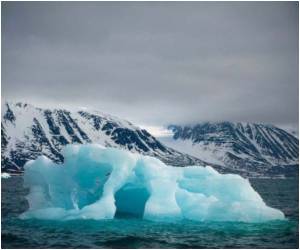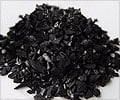Frequent wildfires along Alaska’s North Slope could transform the frozen and treeless tundra into an ecosystem that can store less and less carbon.

Arctic tundra landscapes store huge amounts of carbon in cool, wet soils that are insulated by a layer of permanently frozen ground, or permafrost. Fire has been almost nonexistent in Alaska’s North Slope for thousands of years and the effect of fires on the carbon balance of tundra ecosystems is largely unknown. However, with warming temperatures over the past half-century, the climate in the region is in transition, spurring more thunderstorms, lightning, and wildfires.
In 2007 the Anaktuvuk River fire ravaged a 40-by-10 mile swath of tundra about 24 miles north of Toolik Field Station, where Shaver is the principal investigator of the NSF’s Arctic Long-Term Ecological Research project. The blaze was the largest ever recorded in the region.
While the Anaktuvuk River fire scorched only upper soil layers that are about 50 years old, it caused the release of more than two million metric tons of CO2 to the atmosphere. This amount is similar in magnitude to the annual carbon sink for the entire Arctic tundra biome averaged over the last quarter of the twentieth century. According to Shaver and his colleagues, an Arctic regularly disturbed by fire could mean massive releases of CO2 into the atmosphere, a decrease in carbon stocks on land, and a rapid impact on climate.
Shaver has been studying the Arctic tundra since the mid-1970s, and he knows how to look for gradual shifts in a landscape that is changing, but very slowly. Large disturbances such as fire—which leave the land open to rapid re-growth—have been rare. As the tundra rebounds from the Anaktuvuk River fire, Shaver and his colleagues are watching closely to see if the fire will nudge a major transformation of the North Slope groundcover that is already slowly underway.
More shrubs are expected to appear in the Arctic landscape as the climate warms, a trend that may be accelerated by the advent of fires. “Satellites tell us there has clearly been a greening of the Arctic over the past 30 years,” Shaver says. Many observations point to a warmer landscape that will be dominated by shrubs, rather than the grasses and mosses of today. Some scientists forecast that large parts of the Arctic tundra will eventually become forest. “A key question is whether the conditions on these burn sites are more favorable for the establishment of new seeds, new species,” Shaver says.
Advertisement
Advertisement







